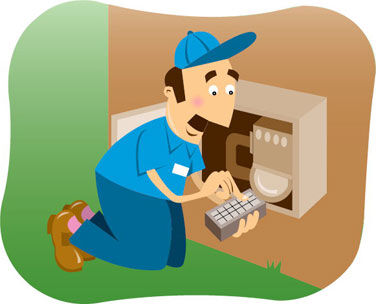 Meters measure the amount of energy that is used in your home or business. There are different types of meters, including:
Meters measure the amount of energy that is used in your home or business. There are different types of meters, including:
- Accumulation meters
- Interval meters
- Pre-payment meters
The distributor owns the meter. The distributor provides information from the meter to the retailer so the retailer can bill you.
Accumulation meters
Accumulation meters show the total amount of energy consumed. Usually a distributor visits your property every two or three months to read the meter.
Total consumption for the bill is worked out by taking the current meter reading and subtracting the previous meter reading. The result is the total amount of energy you have used since the last meter reading.
All gas customers in WA have accumulation meters.
Most electricity customers have accumulation meters, but interval meters are becoming more common.
Interval meters
Interval meters record electricity consumption every 30 minutes. The intervals are read manually once every two to three months (when the meter reader visits the property) or the information can be downloaded to a computer by the distributor using a modem.
Interval meters are used when customers pay different amounts for electricity at different time periods of the day. For example, a customer may pay more for electricity in the afternoon ‘peak’ period. The time periods are called ‘blocks’.
If a customer has an interval meter, the bill will include the total electricity consumed for each block. Contestable customers who want to transfer to a new retailer must use an interval meter.
There may be a charge to change from an accumulation meter to an interval meter.
Some modern interval and accumulation meters are more advanced as they allow remote two-way communication between your electricity distributor and the meter. These types of meters are often referred to as smart meters.
Smart meters
Smart meters have become an increasingly popular way to measure and report electricity usage. As of July 2023, Smart meters are currently installed in around 42% of WA households, with the state government aiming for 100% uptake by 2027.
So, what are smart meters?
Smart meters measure electricity usage in much the same way as interval meters, with data being collected in 30 minute intervals. The main difference is their ability to transmit this data via radio frequency communication points. Data is typically transmitted once a day, this removes the need for metering agents to come and manually read your meter. These tranmission features, coupled with intelligent metering software systems, give users more capability to monitor and manage their electricity usage.
By using your electricity retailers app or installing an in-home monitor you can watch how your consumption changes over time and adjust on the fly. More detailed solar export data is also extremely useful for households, particularly in WA.
If you would like more information on your smart meter or want to enquire about having one installed, be sure to contact your electricity provider.
Pre-payment meters
A pre-payment meter allows a customer to pay for energy before using it, similar to a pre-paid mobile phone.
Pre-payment meters are only available to electricity customers in areas that have been agreed to by the Minister for Energy.
Special protection is available to people who use pre-payment meters under part 9 of the Code of Conduct for the Supply of Electricity to Small Use Customers.
Reading your meter
Accumulation meters are usually read by the distributor but sometimes by the customer. All accumulation meters must be read by the distributor at least once a year.
Interval meters will always be read by your distributor.
If you do not provide access to your meter (e.g. there is a locked gate), or you do not fill in and send back the meter reading form (if you read your own meter), the distributor will not have a meter reading for your property. If this happens, the distributor will estimate your energy use and provide this estimate to your retailer. This means that your next bill will be based on an estimation only (see Bills for more information).
Testing the meter
If you believe your meter is faulty you may ask for a meter test. If the meter is faulty then this test will be at no cost. If you request a meter test and the meter is not faulty, you will have to pay for the cost of the test. Please contact your energy provider if you would like to learn more about requesting a meter test.
